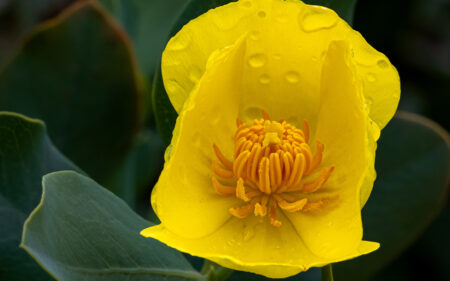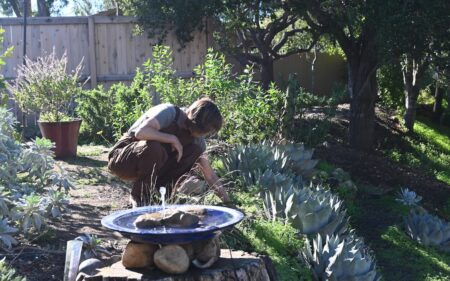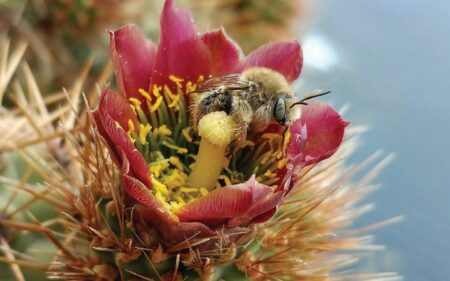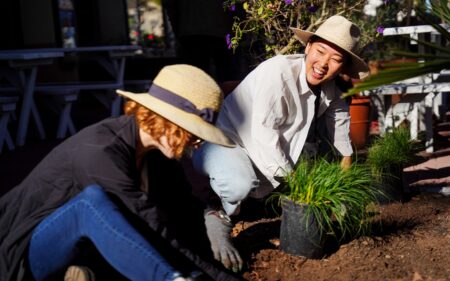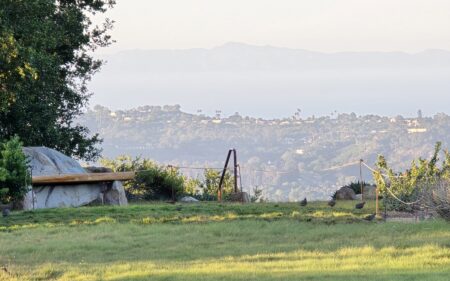Stanley Smith Plant Establishment Trials
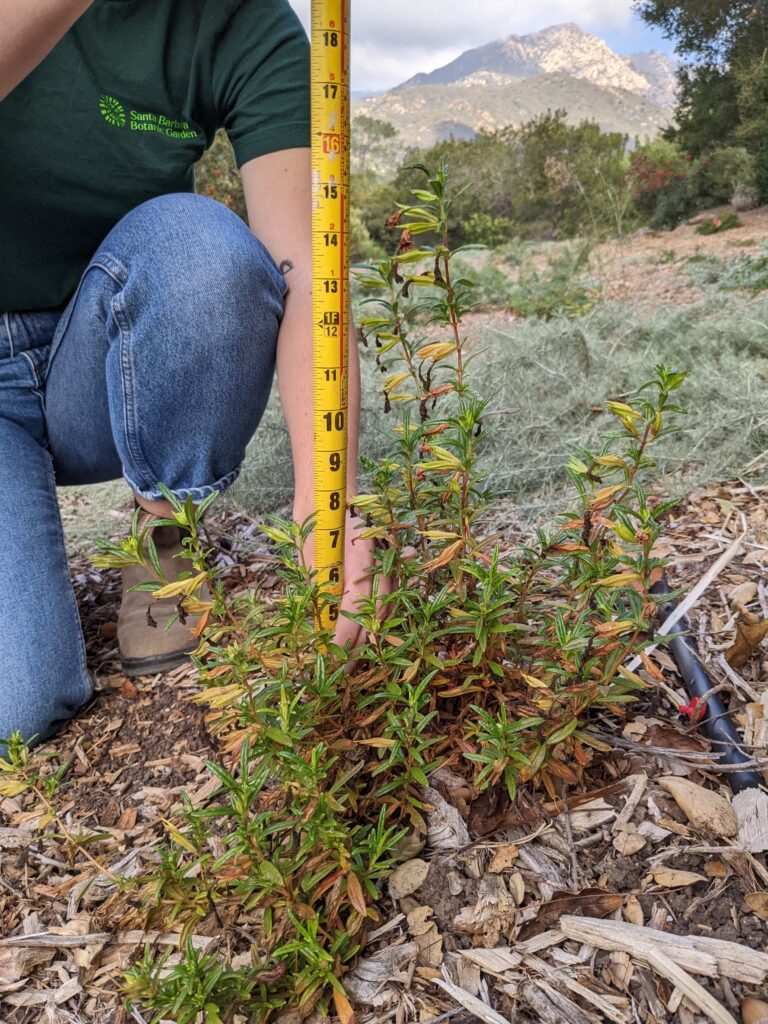
Why Study Native Plant Gardening?
California native plant horticulture is an open frontier. There are still lots of basic questions that we haven’t been able to test scientifically yet. Santa Barbara Botanic Garden is tackling one of these questions with support from the Stanley Smith Horticulture Trust.
Through horticultural research are still learning a lot about the best way to grow native plants in a garden setting. This work is a critical part of the Garden’s mission to help empower home gardeners to create habitats in their own yards.
It’s easy to forget that many of the plants commonly seen in gardens have been bred for hundreds of years by people to thrive in that exact environment. In the wild, these plants have very different selective pressures. Many species of California’s native plants are adapted to extreme conditions: long periods of drought, dense soils, space to spread. All of these are very different than a home garden environment. Through controlled experiments, we hope to learn more about this planting process and the adaptation of California’s native plants to home gardens.
The Experiment
In the Stanley Smith Plant Establishment Trials, we are exploring the relationship between the initial size of the plant and the amount of water it needs. The experimental area is divided into three plots, and each of these receives a different amount of water. We are testing these ideas using five different species of plants that were in two different initial sizes: 4-inch pots and 1-gallon pots.
One of the ideas we are interested in testing is a phenomenon that native plant gardeners call a “nursery brat.” There is a suspicion that some native plants are “spoiled” by the ideal conditions native plants receive in a nursery which leads to them struggling when planted in the real world. Furthermore, these plants seem to need more water to grow. This is supported by observations of small pot starts that seem to adapt more quickly and ultimately need less water to thrive.
To test this idea, the plants are divided up into plots that receive lots of water, a moderate amount of water, and minimal water. These plots have 50 plants each. There are 10 representatives of each species: five of which were planted from a smaller size (4-inch pot) and five of which were planted from a larger size (1-gallon pot).
Every month we measure these plants along three axes: growth size east to west, growth size north to south, and the plant’s height from the ground. These values are then used to calculate the plant growth index (PGI). The PGI is a way of standardizing measurements across plants of different initial sizes to help compare all the plants in this experiment. Each plant is also given an appearance score — a ranking that indicates the overall beauty and vigor of the plant.
Designed with You in Mind
One of the goals of this experiment is to help empower people to plant California’s native plants confidently. All the equipment we used is inexpensive and commonly available. We even based our watering schedule on the watering calculator created by Santa Barbara County to help advise home gardeners.
The plants used for this experiment are five commonly available native plants from several different plant families found in California:
- Big Sur manzanita (Arctostaphylos edmundsii ‘Big Sur’)
- Yankee Point ceanothus (Ceanothus thyrsiflorus var. griseus ‘Yankee Point’)
- Canyon Gray California sagebrush (Artemisia californica ‘Canyon Gray’)
- Jelly Bean Dark Pink monkeyflower (Diplacus Jelly Bean Dark Pink™)
- Bee’s Bliss sage (Salvia ‘Bee’s Bliss’)
Data
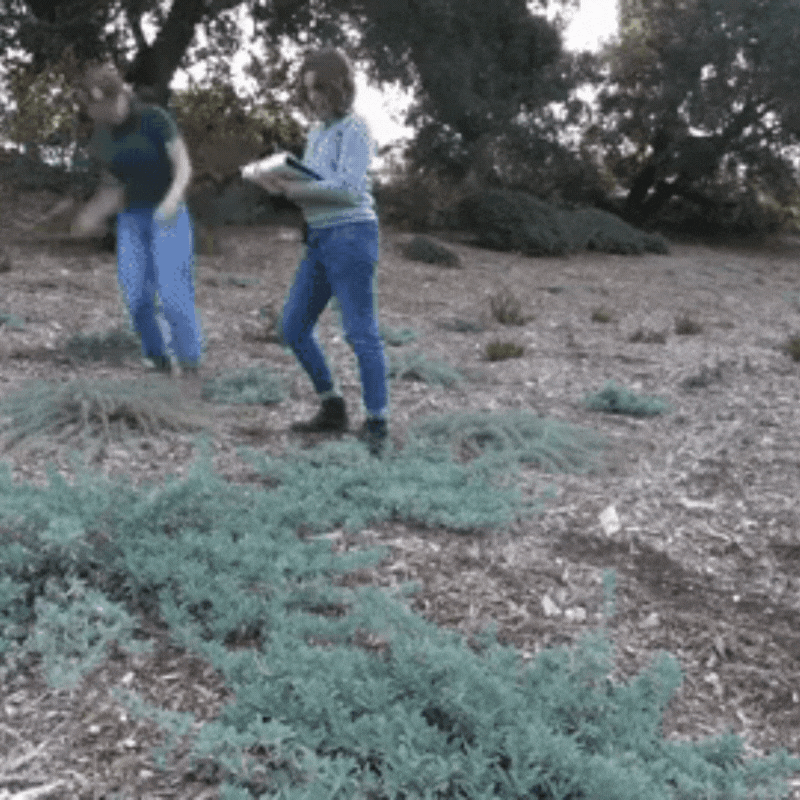
We began this experiment in spring 2022, and we plan to continue through December 2023. Every month we measure how much each plant has grown and assign it an appearance score. The growth index we calculate will ultimately be used for statistical analysis at the end of the experiment. Our aim is to see if there is a measurable difference between the different treatments and pot sizes.
To create these graphs that show the experiment’s progress, we have simply averaged together the PGI for each species and initial size in each treatment.
We cannot yet say if the differences between treatments are statistically significant, since we haven’t analyzed the final results yet. However, we invite you to look at the data we have gathered so far. What trends do you notice?
 Donate
Donate
